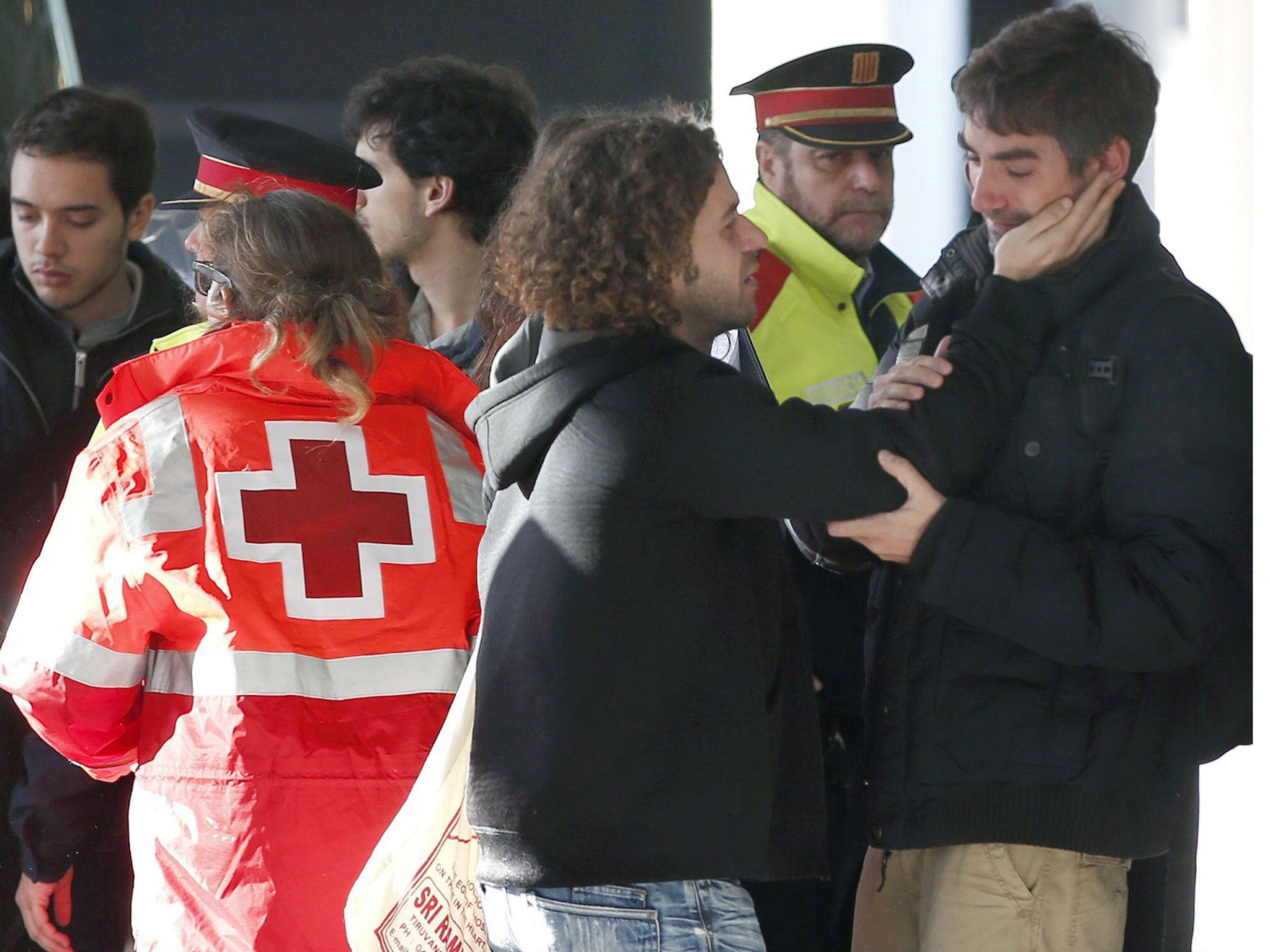Germanwings crash: How a small army of specialists will begin the complex and harrowing process of identifying the bodies of the victims
Authorities are working to restore the remains of loved ones to those they have left behind

Every few hours today an ambulance or a refrigerated lorry left the Alpine field which has become the ad hoc marshalling yard for the vast operation to reach the wreckage of flight 4U 9525. Inside each vehicle, carefully concealed under layers of polythene wrapping, were some of the remains of the 150 people who perished on board.
The first bodies recovered from the site of the Germanwings crash began to be transferred some 48 hours after the disaster by the fleets of helicopters that now shuttle in a constant clatter between the temporary airfield in this ski resort and the isolated mountain valley where the Airbus A320 disintegrated.
But these sombre journeys, carried out under a blue light escort, are only the beginning of the grim process of identifying the passengers - school children, businessmen, mothers and fathers - whose bodies could not have survived the appalling impact of the crash intact.
Germanwings plane crash live
Germanwings Q&A
Descent may have been 'deliberate, suicidal choice' by pilot
In order to deal with this immense task, a small army of specialists has been deployed to the crash site and the surrounding areas to use the full battery of forensic, scientific and anthropological tools available to identify each of the dead.
They include forensic dentists, medical anthropologists and DNA specialists as well as several dozen dedicated search and recovery workers deployed to the isolated and treacherous crash site to label and catalogue each human fragment. Among them is a specialist Incident Response Team deployed by Interpol to co-ordinate what is in effect an international disaster with victims from around the world.
Brice Robin, the state prosecutor based in Marseille who is in charge of the French investigation, said: “The identification procedure is going to last several weeks. We are faced with 150 bodies which have undergone multiple trauma.”
The solution to this heartrending jigsaw lies in the bringing together of several sources of evidence, ranging from the pre-existing medical and personal records of the passengers to comparisons with the DNA of relatives, to the clues offered by a single bone.
Georges Leonetti, head of the medico-legal service in Marseille, said: “There is little chance that we will recover complete bodies. In order to achieve identification we therefore have to resort to the clues provided when people were still alive.”
One pilot was locked out of the cockpit before Alps crash
Rapid drop in pressure is favoured theory so far
Germanwings: 'It's too early' to consider changing safety procedures
Teams from Spain and Germany have already begun compiling medical dossiers on each of the victims, seeking identifying details which can range from dental records to operation scars to descriptions of appearance. DNA swabs have been taken from family members and similar work will be carried out in each of the countries affected by the disaster, including Britain.
Mr Leonetti said: “These are all details which allow us to compare the remains one against the other to arrive at an eventual identification.”
Among the most delicate work going on at the crash site in the Vallée de la Blanche and in laboratories across the south of France will be that of the forensic anthropologists who must comb the crash site for clues that tell the stories of the departed.
One expert likened the work to that of archaeologists as they sift a site, albeit one of the most recent and overwhelming trauma. A recovery worker at Seyne-les-Alpes said: “A single bone can tell you the sex or the size of an individual. Each clue must be recovered and entered into the process. It is careful, painstaking work.”
It is also work which, according to the worker, will potentially endure for months. He added: “It is our duty to give back their loved ones to the families of those who died, no matter how difficult that can be.”
Subscribe to Independent Premium to bookmark this article
Want to bookmark your favourite articles and stories to read or reference later? Start your Independent Premium subscription today.

Join our commenting forum
Join thought-provoking conversations, follow other Independent readers and see their replies